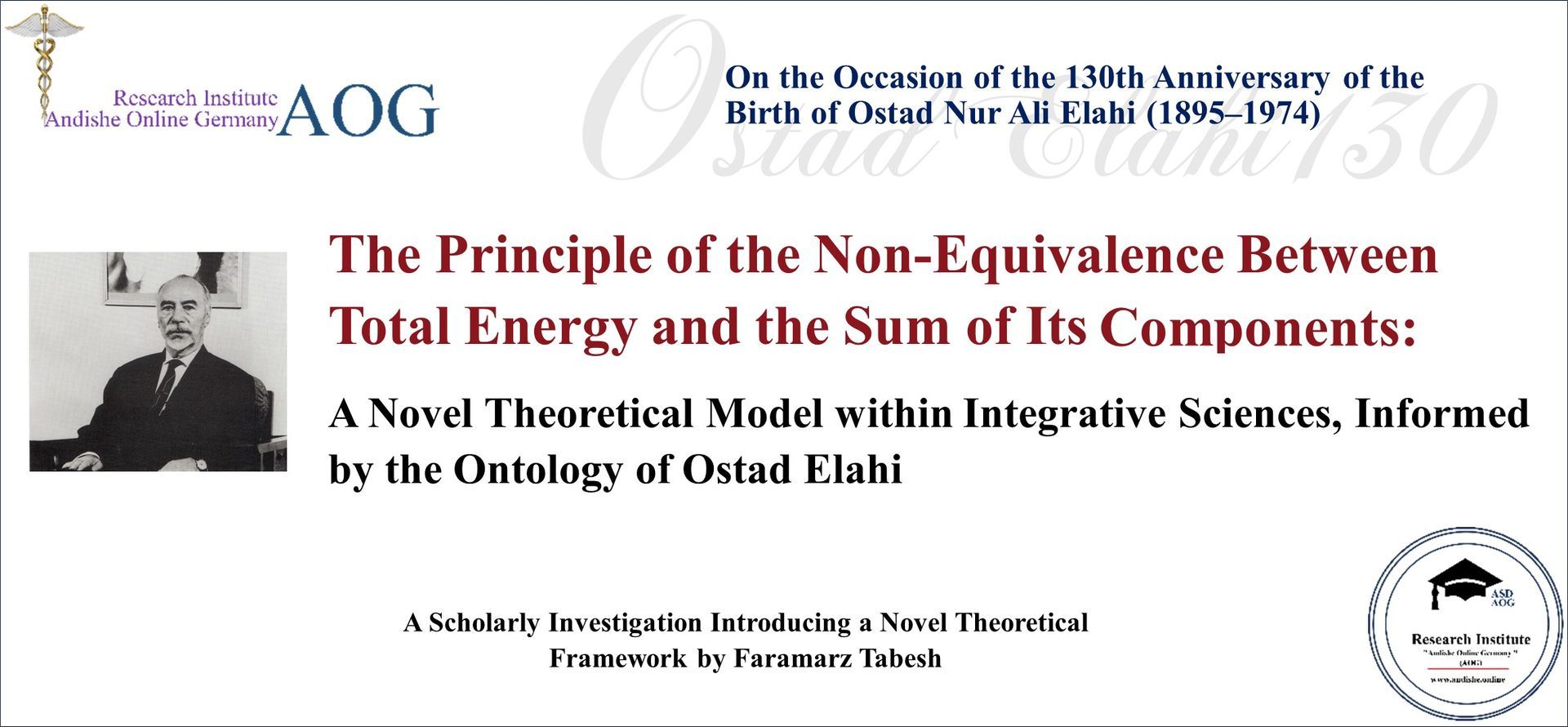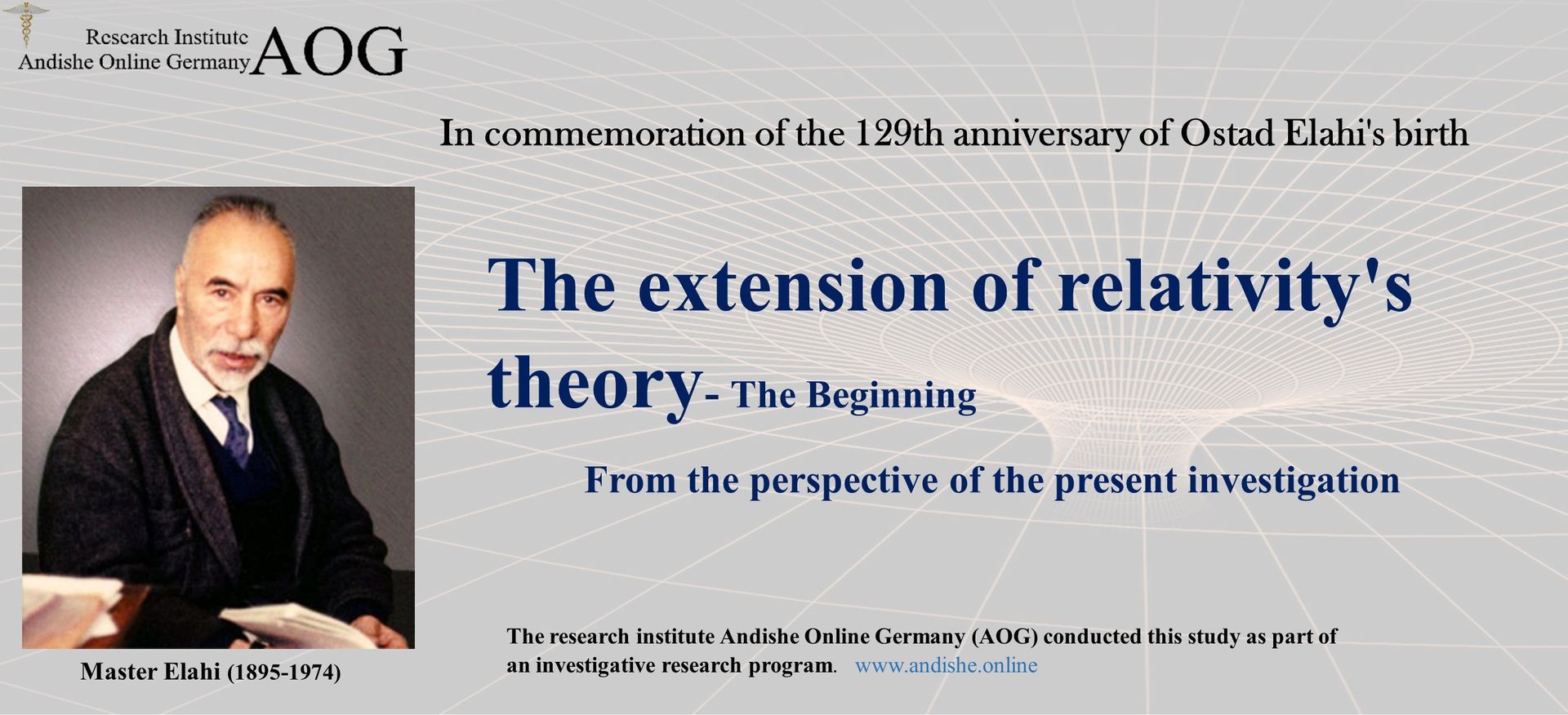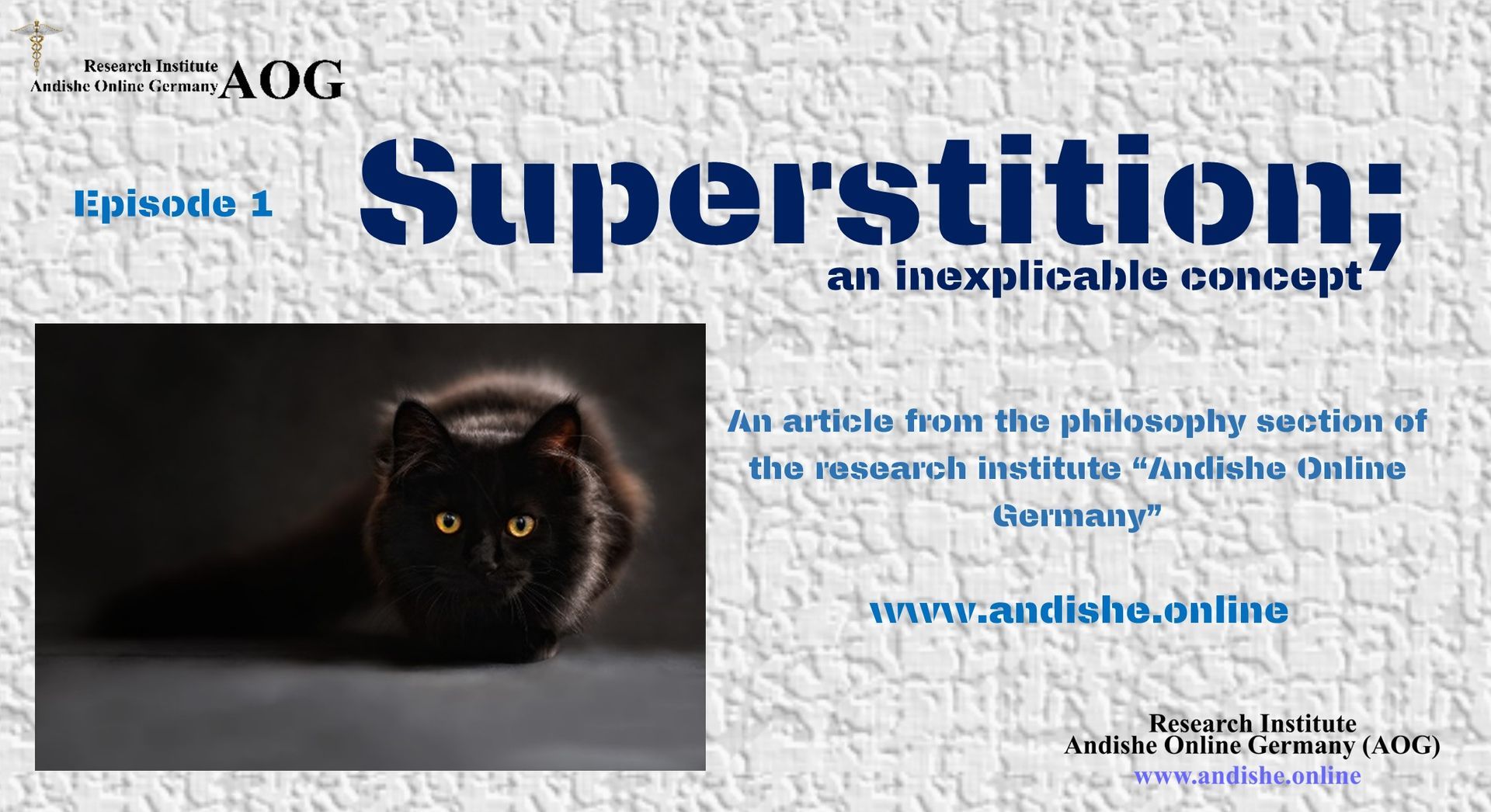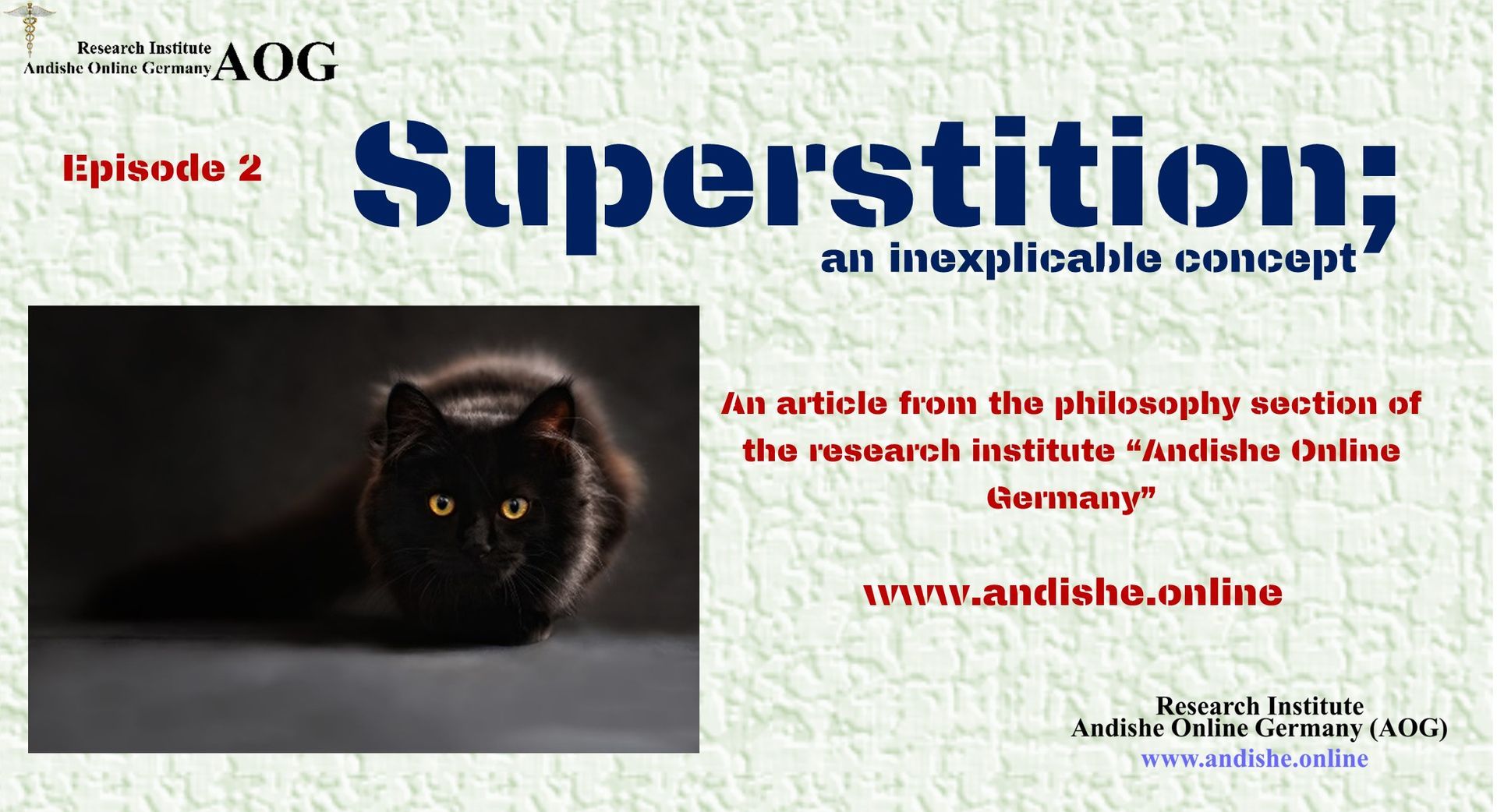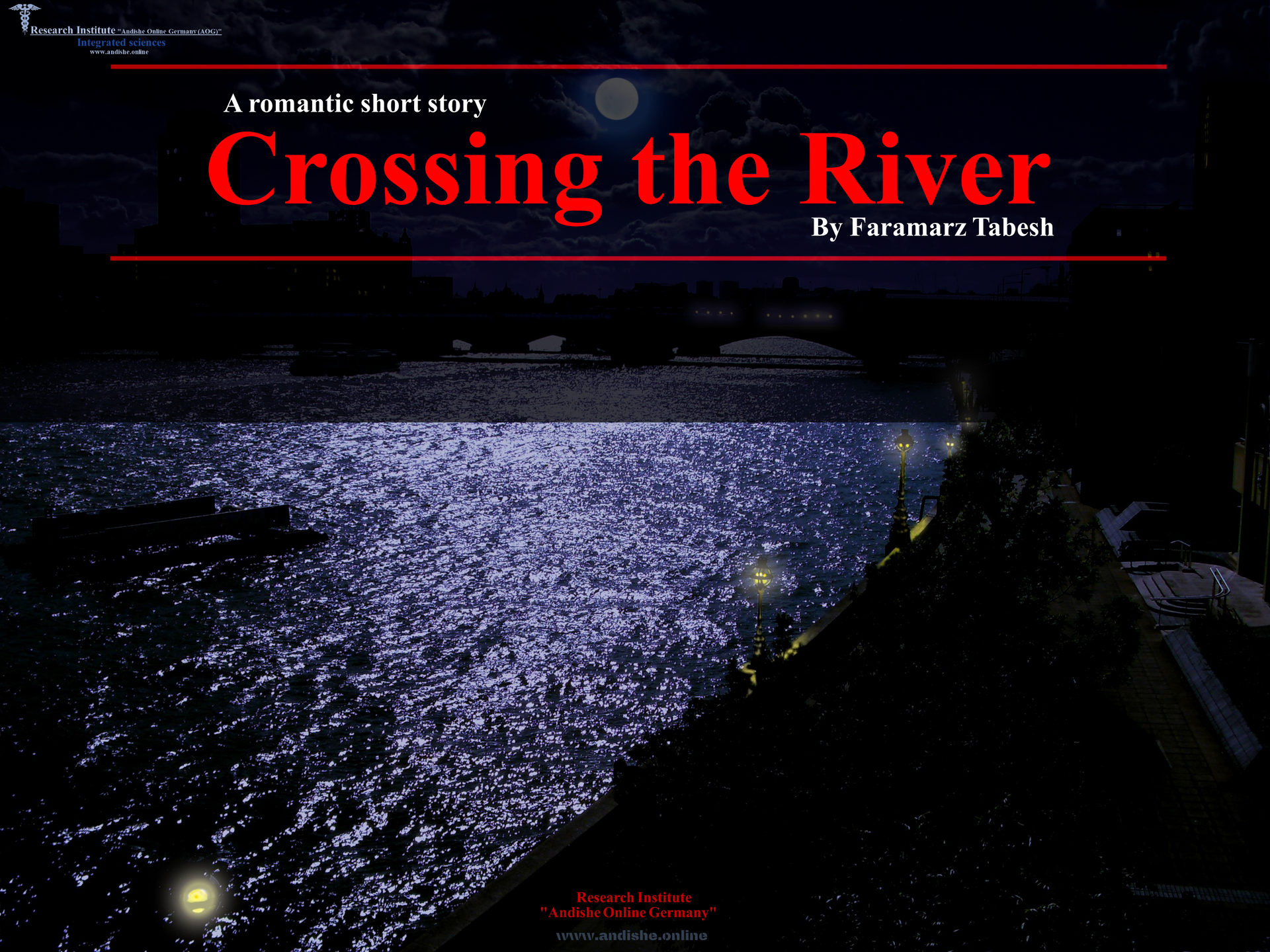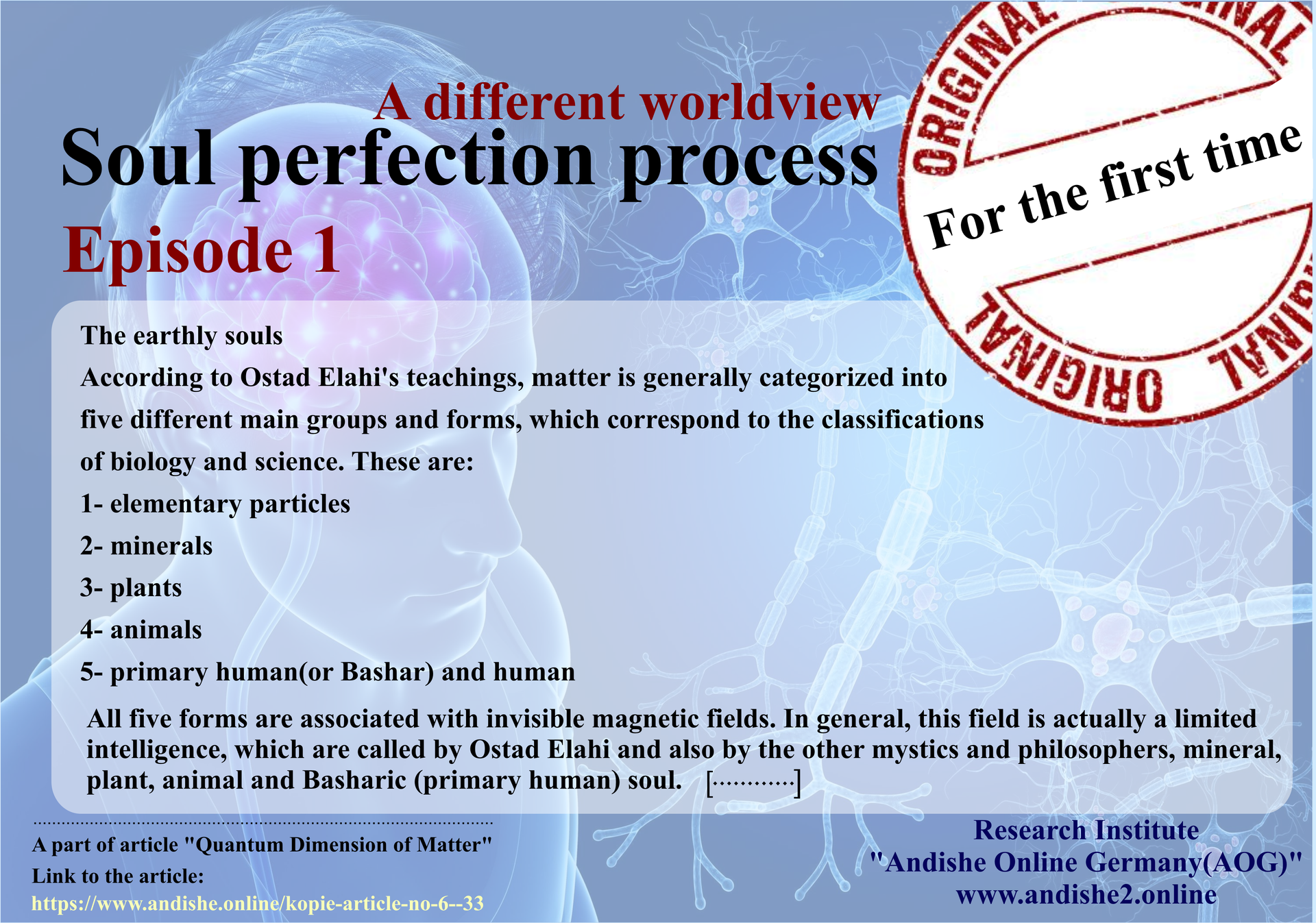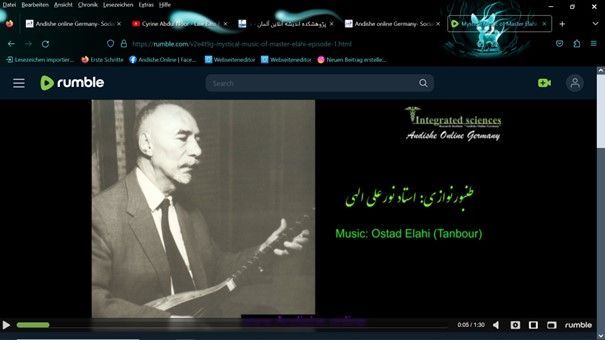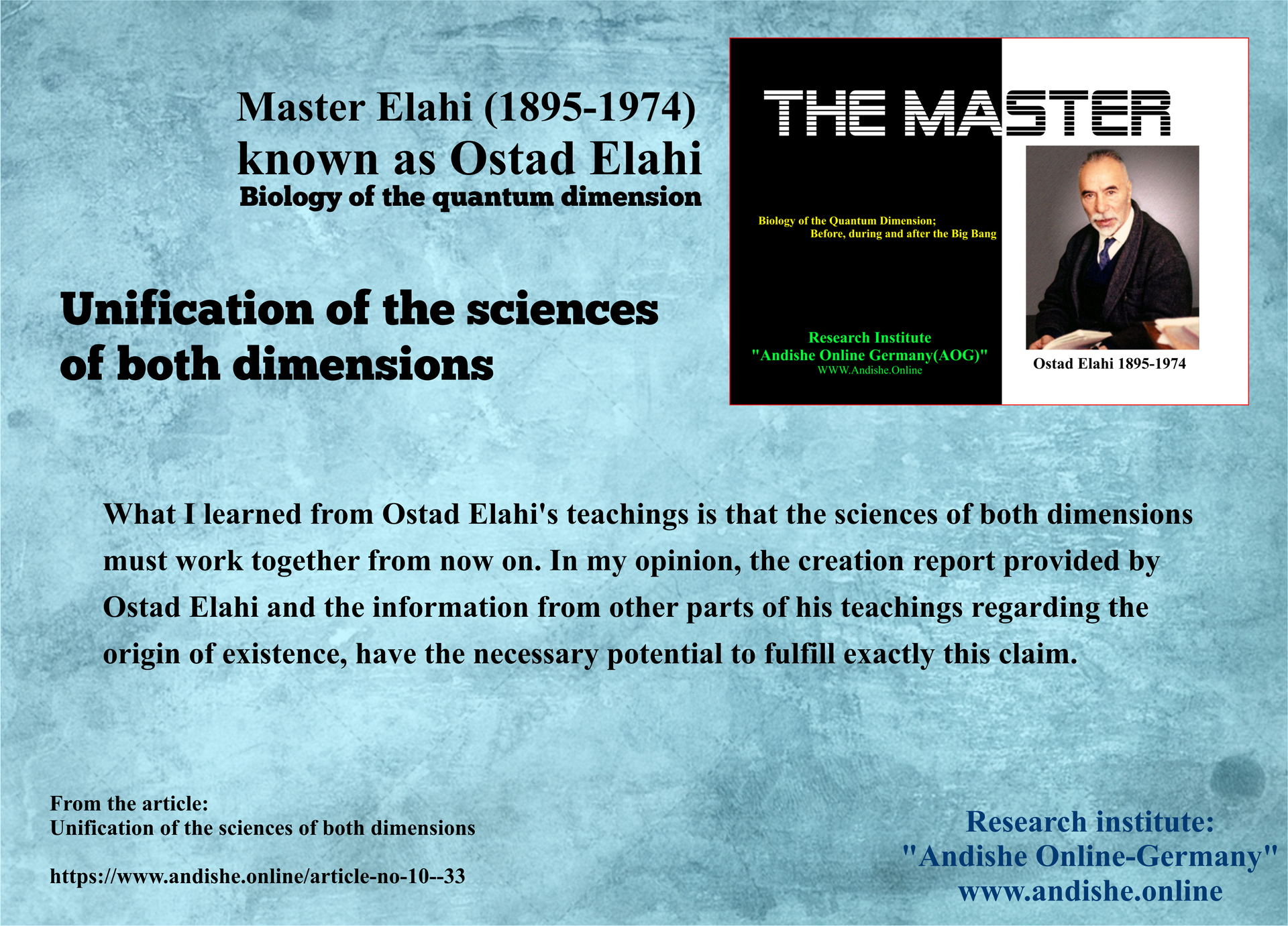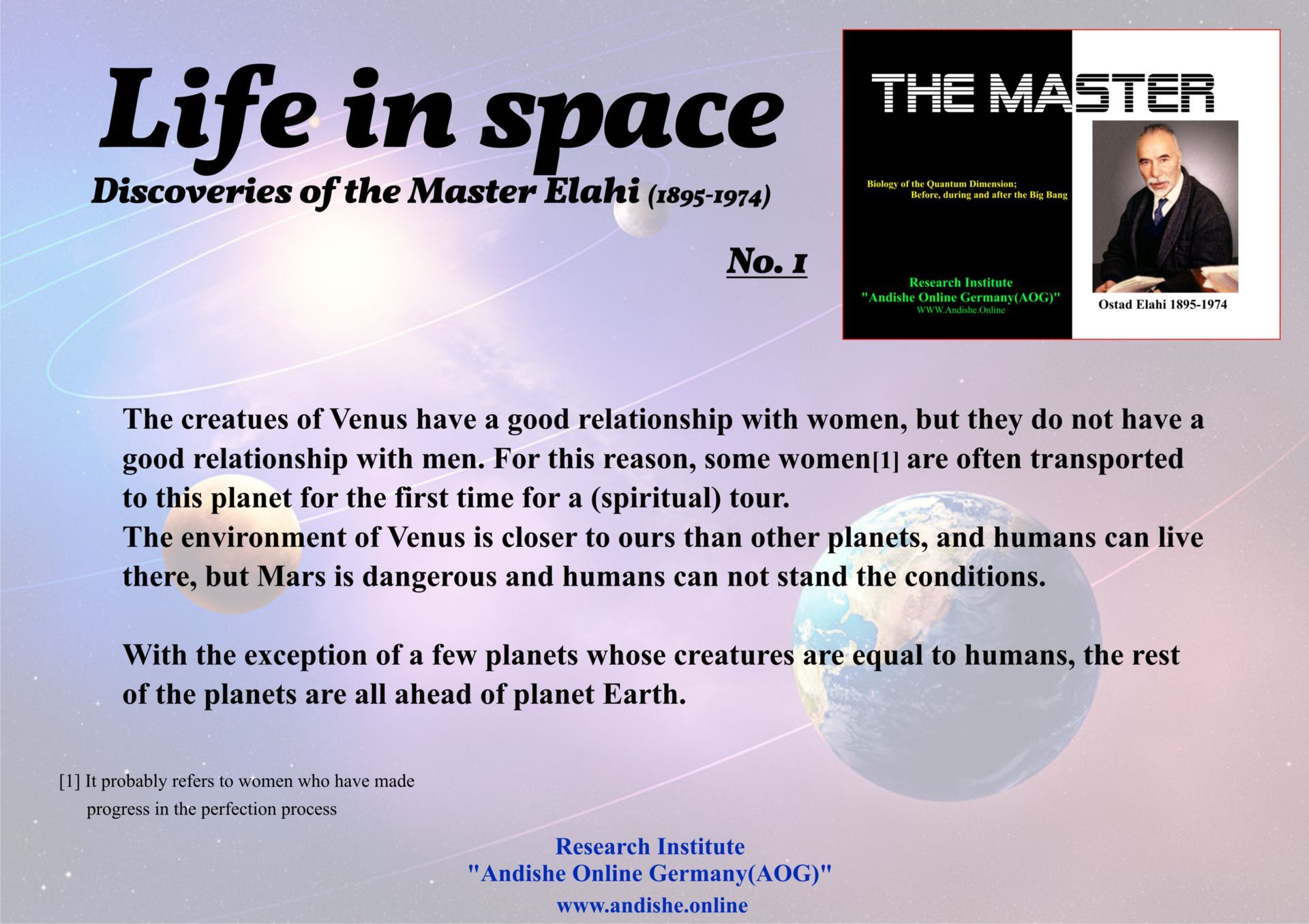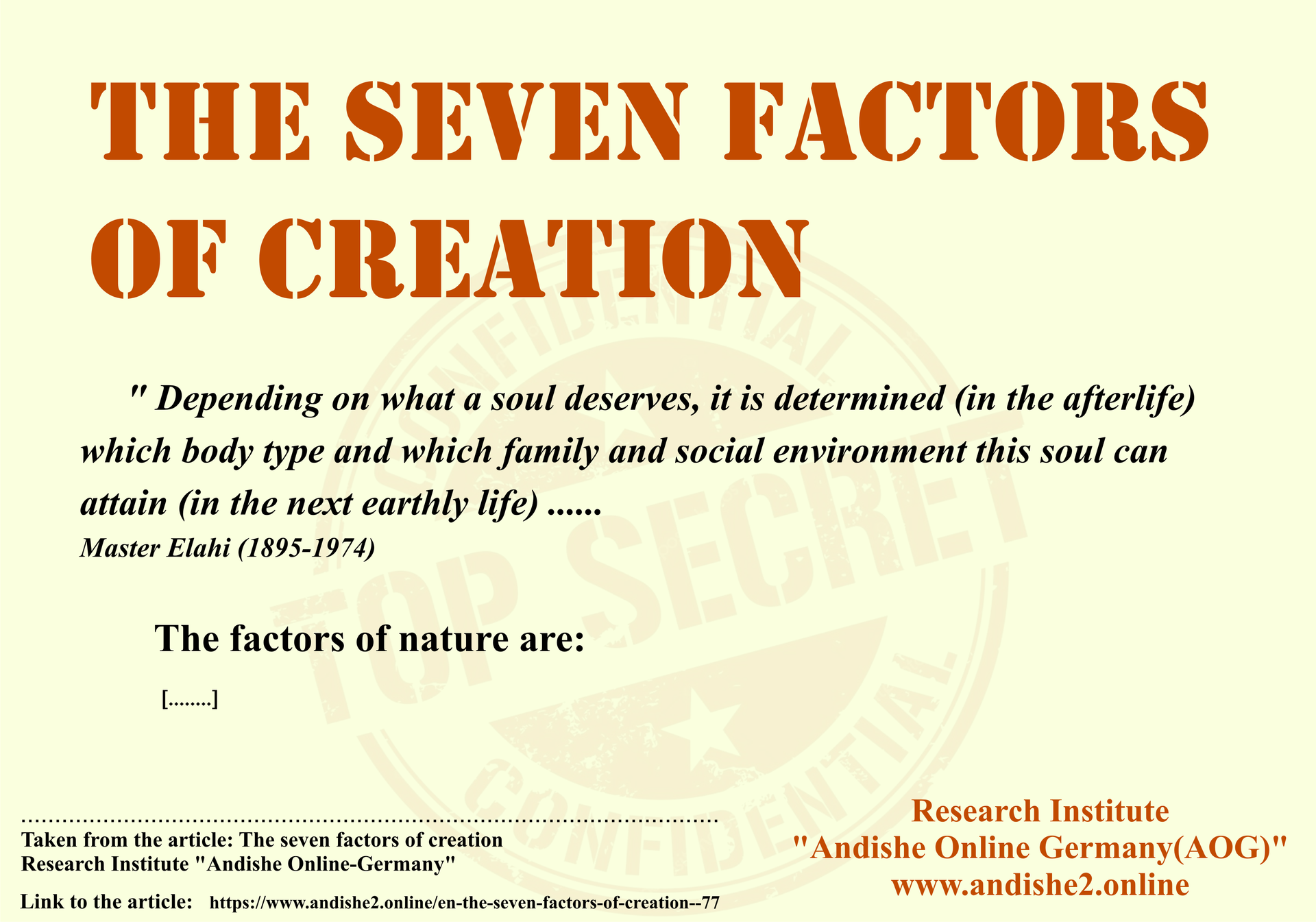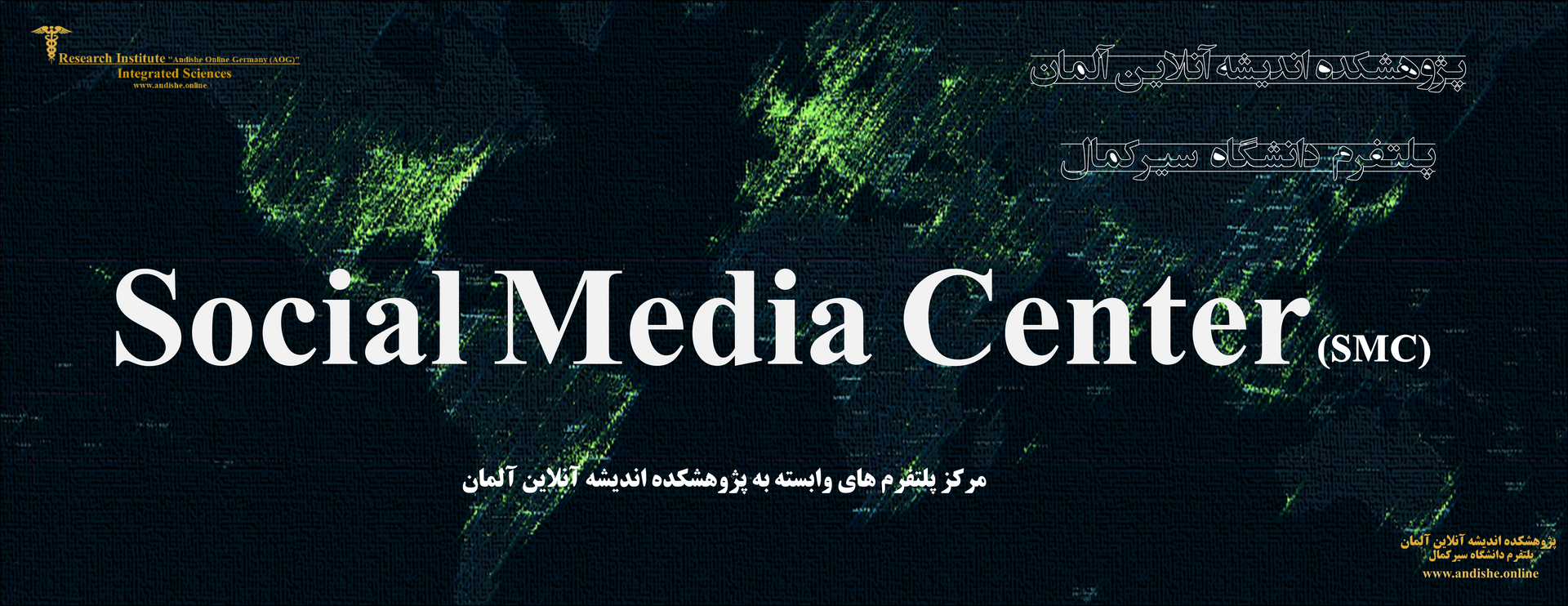Podcast &Video clip at the bottom of the page
The audio format of this article, designed for visually impaired individuals, can be found at the bottom of the page.

OSF:
English:
https://doi.org/10.17605/OSF.IO/EGMPC
Persian:
https://doi.org/10.17605/OSF.IO/W3M58
French:
https://doi.org/10.17605/OSF.IO/ETXPS
Spanish:
https://doi.org/10.17605/OSF.IO/DKSEQ
German:
https://doi.org/10.17605/OSF.IO/ZW47U
Arabic:
Article Metadata
Author: Faramarz Tabesh
ISNI: 0000 0005 2737 2290
Affiliation: Founder and Director, Research Institute Andishe Online Germany (AOG)
ISNI: 0000 0005 2724 714X |
Ringgold ID: 823032
Journal: Andishe |
ISSN: 1619-9898
Article Type: Interdisciplinary Sciences (also known as Integrative Sciences)
Keywords:
Ontology, Cognitive Discussion, Scientific Analysis, Conceptual Misconceptions, Epistemology, Interdisciplinary Critique, Philosophy of Mind.
Publication Dates:
Persian (Original Edition): Published on October 30, 2019
Persian (Revised Edition): Published on September 1, 2025
English, German, French, Spanish, and Arabic Editions: Scheduled for publication on August 15, 2025
Archive Code:
Hwg unl jsh,d hkvCdög fhlül,uhkvCd hüchM_tvhks,d
The Principle of the Non-Equivalence Between Total
Energy and the Sum of Its Components:
A Novel Theoretical Model within Integrative Sciences, Informed by the Ontology of Ostad Elahi.
On the occasion of the 130th anniversary of the birth of Ostad Noor Ali Elahi (1895-1974), an eminent thinker in the
fields of spirituality and ontology, we pay tribute to his thought and work through the presentation of this article.
Abstract
This paper seeks to critically reconsider certain epistemological foundations of science and metaphysics. Drawing upon Elahi's ontological vision, the principle of “the non-equivalence of total energy to the sum of its parts” is introduced as a theoretical basis for formulating a new framework at the intersection of physics, biology, and ontology. This principle posits that complex systems are not merely the sum of their components but embody emergent qualities that transcend them. The proposed theory aims to lay the groundwork for a deeper synthesis between academic science and modern metaphysics, potentially transforming our understanding of the structure of existential reality.
At the Research Institute Andishe Online Germany (AOG), we believe:
„Within the next two decades, a new order will dominate the planet Earth. One of the defining characteristics of this new order will be fundamental transformations across all scientific domains. Currently, we are merely establishing the preliminary frameworks.”
The present paper has been published in English, Persian, French, German, Spanish, and Arabic.
Preface
As is well known among enthusiasts of the history of science, in the late nineteenth and early twentieth centuries, a new scientific field gradually emerged, which came to be known as quantum mechanics1. The foundation of this discipline can be traced to Max Planck’s2 pioneering work on the quantization of electromagnetic radiation emitted by black bodies. It appears that Planck was the first in the modern era to use the term "quantum" to denote a discrete, very small unit or packet.
Following Planck’s research, Werner Heisenberg3 formulated the Uncertainty Principle4 in 1927. Owing to this and other significant contributions, he came to be recognized as the father of quantum mechanics. Around the same time, a series of groundbreaking scientific developments signaled the decline of Cartesian–Newtonian thinking5. For instance, Albert Einstein6 published a paper arguing that Newtonian equations are valid only under limited conditions7. Roughly during this same period, Max Born8, Werner Heisenberg, and Pascual Jordan9 developed matrix mechanics10. In 1926, Erwin Schrödinger11 introduced his “formulation of quantum mechanics”, known as the “wave equation”. That same year, John Hasbrouck Van Vleck12 published his influential book Quantum Principles and Line Spectra13. Around this time, many other prominent scientists also began theorizing about a new paradigm that rapidly came to be known as “quantum mechanics.”
All of the developments that led to the emergence of quantum mechanics—whether mathematical formulations and calculations, some of which have been met with skepticism due to yielding infinite14 or non-physical results, or philosophical and probabilistic interpretations such as Schrödinger’s cat15 paradox and other approaches that Albert Einstein famously referred to as the idealism of physicists16—collectively conveyed a profound message. That message was clear: the era of scientific thinking rooted in the rigid, one-dimensional Newtonian–Cartesian worldview had come to an end. It was now imperative to approach phenomena through a new lens and from fundamentally different perspectives.
A Brief Overview of Master Elahi’s Ontology
It has now been nearly a century since the emergence of Heisenbergian quantum thought, and yet, as Einstein lamented,
“It has not brought us even a step closer to the mystery of the Old One. [Note: Here, “the Old One” refers to Einstein’s metaphorical reference to the divine or the ultimate mystery of the universe.]”
Like many other scientific disciplines, quantum mechanics has ultimately demonstrated its inability to explain the origin of the universe17.
In such a context, the need has long been felt for a new framework—one that opens a different window through which to observe and reinterpret the forces shaping the fabric of existence. With the advent of integrative sciences18 at the Research Institute Andishe Online Germany (AOG)—rooted in the ontological teachings of Ostad Nourali Elahi19—this moment has arrived. It is time to move beyond the Heisenbergian-quantum paradigm and redefine the boundaries of knowledge.
A review of the articles published so far in the Integrative Sciences section of our Research Institute, AOG, suggests that a significant shift in scientific perspective is already in motion—one that is increasingly acknowledged by both experts and discerning observers.
No branch of mainstream academic science—including quantum mechanics, particle physics, or biology—has fully addressed the relationship between the whole and its parts. These disciplines remain largely constrained by Cartesian-Newtonian frameworks.
Nearly fifteen years ago, while compiling my handwritten research notes—collected over many prior years—I revisited one of my early papers on this very issue. By designing several graphics and formulating its core principles mathematically, I eventually articulated my findings as a scientific inequality. On April 5, 2019, I published this formulation—under the title Phase Two: Analysis of the Inorganic Stage20 (Mineral Stage)—in the Integrative Sciences section of AOG. However, I deliberately refrained from explaining the theory at that time. In order to interpret this concept appropriately, it was first necessary to extract, analyze, and publish foundational ontological principles derived from Ostad Elahi’s teachings—principles that would serve as an explanatory context. A defining example of this is as follows:
- Does matter also possess a quantum dimension21? If so, how should it be defined and described in a way that removes it from the realm of superstition and pseudoscience, and places it firmly within the framework of academically credible science?
- It was necessary to propose a deeper and more refined definition of the magnetic field22, one that goes beyond the conventional understanding currently taught in traditional academic institutions such as universities.
- Subatomic particles23, including fermions and antifermions, needed to be re-examined through a different lens—specifically, through the ontological framework introduced by Master Elahi—in order to facilitate a better understanding of their behaviors and interactions, which ultimately lead to the cohesion of matter.
- It was essential to explain the two primary sources of energy24, from which all other forms of energy—across the multiverse(s)25—are nourished.
- The full spectrum of intelligence networks26, from the simplest to the most complex forms, had to be analyzed from a bold, novel, and somewhat revolutionary perspective, and made accessible to researchers.
- And, of course, dozens of additional foundational topics had to be addressed in preparation for the formulation of theories such as the Quantomagnetics Theory27 and the present theory introduced in this research paper.
At this point, it is important to recognize that for such theories to attain global scientific legitimacy, complementary practical research within modern laboratories of academic institutions is essential.
Therefore, we warmly invite all researchers working in relevant fields at leading universities around the world to collaborate with us in expanding this newly opened window toward a novel scientific horizon.
The Principle of the Non-Equivalence Between Total Energy and the Sum of Its Components
This study proposes that the time has come to present this theory, developed through the analysis of Ostad Elahi’s ontology at the Research Institute AOG, as referenced above.
I consider this to be among the most critical scientific and academic issues, as it plays a fundamental role in explaining the quantum dimension of matter—from the structure of a simple atom to that of a highly complex being such as a human. Moreover, it offers insights that unveil some of the mysteries of creation itself.
According to this principle:
“In every biological system, the total energy of the whole is always greater than the sum of the energies of its constituent parts. This difference gradually increases over time.”
Note 1:
This theory defines energy as encompassing both motivational energy and information. Since this information is stored as magnetic codes in specialized databases within the quantum dimension of matter, the entire system is regarded as an energy system, albeit one defined by unique parameters.
Note 2:
The term
“soul”
is a classical expression referring to what we define as the second dimension of matter, namely the quantum magnetic field of matter. We have provided detailed definitions and the conceptual clarification of this idea within our theoretical framework.
Note 3:
Every phenomenon and entity in the universe is alive, dynamic, and possesses its own form of consciousness, which is in a constant state of expansion. The concept of
“death”, in this context, is nothing more than transformation. Therefore, it is not only appropriate but necessary to examine every component and being in the universe as a living, conscious unit.
Note 4:
No entity in the universe will ever regress to a level of consciousness lower than the one it currently possesses. The movement is always upward—from lower to higher states. However, in the case of the human species, this trajectory can, under certain circumstances, follow a slightly different pattern.
Note 5:
All units of existence in the universe, despite their varying forms, share a common overarching purpose:
to attract benefit, to repel harm, and—through the interplay of these two mechanisms—to ensure the continuation of their own survival.
Note 6:
The struggle for survival is a driving force that propels every unit of existence toward a more stable state. This progression constitutes a localized process of perfection, which ultimately aims at achieving the final or ultimate state of perfection for that given unit.
Note 7:
The magnetic fields—that is, the quantum dimension—of any material entity, once they have acquired all the information accessible at that specific level, will sever their connection with the material dimension and liberate themselves from its confinement. This separation is the primary reason for the subsequent decomposition of the material dimension.
Note 8:
When the internal dynamics of a unit of existence become so subtle that changes occur only at the level of minimal excitations, the discussion no longer pertains to the material aspect of that entity. At that point, we have entered the non-material, quantum dimension of the phenomenon. Throughout the present research paper, whenever the term “quantum state” is used, it specifically refers to this condition as described above.
Note 9:
In this scientific study, a specific stage of the transformation process within the mineral phase has been examined. It is important to note that the terms “creative quantum cloud,” “quantum cloud,” or “magnetic field” are used to describe the classical concept of the soul.
To better understand this concept, please refer to the following graphic:

Explanation of the Above Graphic
This diagram illustrates how a quantum creative cloud—that is, the magnetic field or the quantum dimension of matter—detaches from its material host upon completing a segment of its evolutionary journey. Although the process is complex, it can be expressed in more accessible terms for broader understanding:
“At the quantum level, the individual creation clouds (or energy fields) separate from one another because the cohesive force that once bound the entire system in cooperation and interaction has, in this specific case, reached its optimal expression. Specifically, the mineral soul of the marble has now attained the most stable and complete state possible within this phase—thus, it has separated from the material whole.”
The Separation of the Mineral magnetic field from the System
The separation of the
“mineral magnetic field” from the material system occurs once it has acquired sufficient experience—what can be described as relative perfection in this particular phase—to become capable of learning and applying mechanisms that ensure the stabilization of the system’s survival at its highest achievable level. This capacity and insight emerge from the continuous interactions between the system’s components and their environment, aimed at attracting benefit and repelling harm for the system as a whole. This developmental process unfolds under the supervision of the soul, or what may be more precisely defined as the super-creation field—that is, the quantum magnetic field associated with the system.
However, due to current scientific limitations, this process remains largely inaccessible to empirical validation. On one hand, ultra-sensitive instruments required to perform the relevant experiments are still unavailable. On the other hand, misconceptions about the nature of matter and energy hinder researchers from conducting simultaneous and highly precise observations and measurements—an inherent limitation already demonstrated by Heisenberg’s uncertainty principle.
Consequently, the comprehension of the following inequality—even within academic circles—remains a significant challenge. I have formulated this inequality as follows:
Etotal > Edo. + Eca. ⇒ Etotal – (Edo. + Eca.) = PΨx
⇒ Etotal = Edo. + Eca. + EPΨx
Edo. = Energy of dolomite
Eca. = Energy of calcite
PΨx = A perfected magnetic field of matter that is ready to detach from its corresponding material structure.
In my book
“Biology of the Second Dimension”, I have addressed this topic in greater detail—specifically in the context of the formation of the quantum dimension of calcium oxide, followed by its evolutionary progression toward the creation of the magnetic field of calcium carbonate (limestone), which is positioned one or more levels below marble on the evolutionary scale. This process is analyzed as follows:
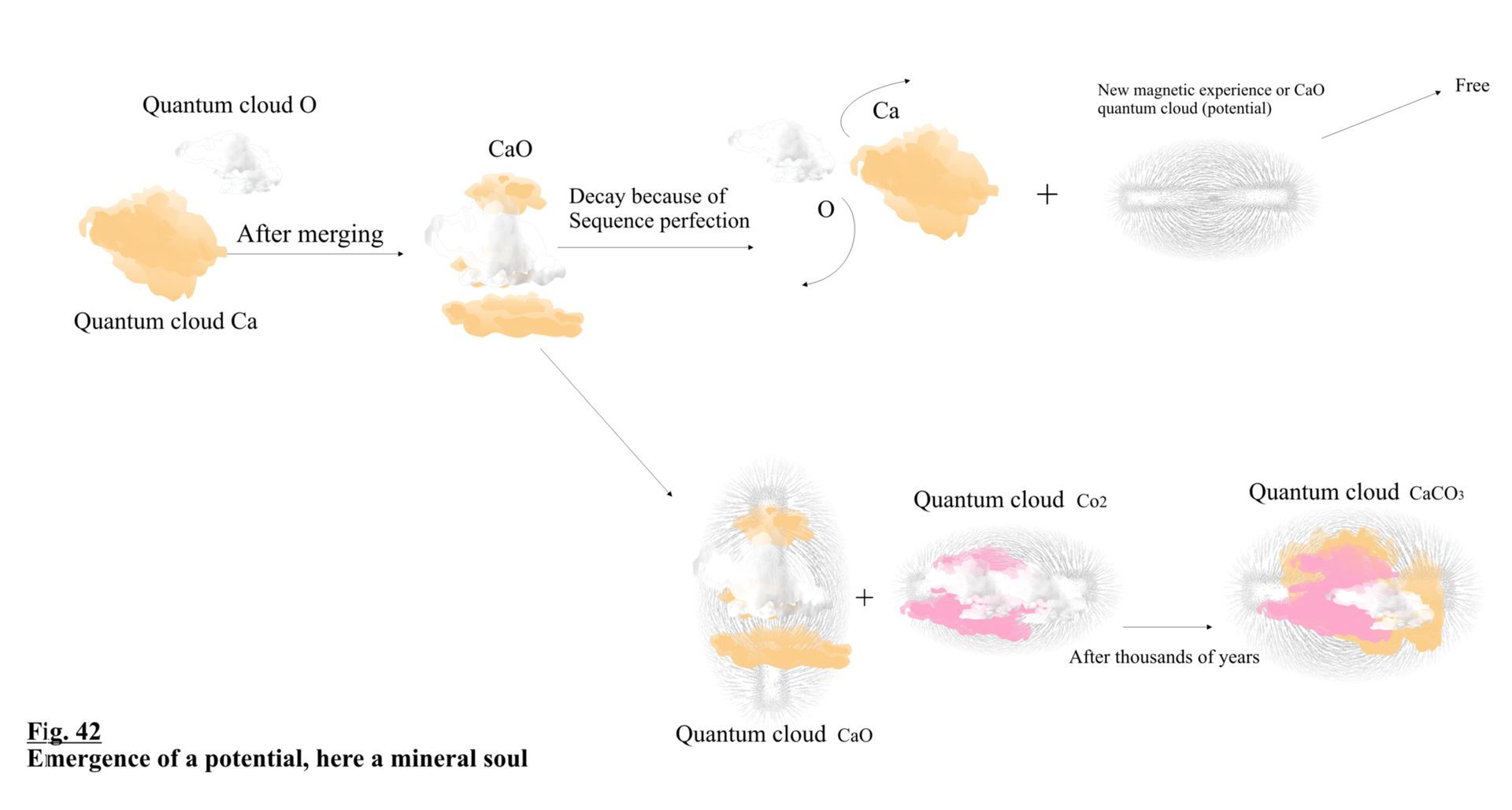
In mathematical terms:
CaCO3 ⇾After the decomposition process ⇾CaO + Co2 +Ψ
Ψ= A quantum cloud, which represents a limited unit of experience and consciousness corresponding to its specific level of existence.
This signifies that once the evolutionary progression of the “mineral magnetic field” reaches its completion at a given level, it detaches from the material system. As a direct consequence, the constituent elements of that system begin to separate.
“This separation occurs because the unifying force—which had, until that point, maintained the internal coherence and mutual interaction among the system’s components and their environment—is no longer present.
This event represents what may traditionally be referred to as death, not only in biological systems but across all strata of creation, including in the case of the human being.”
In this process, what effectively takes place is that calcium carbonate, from the very beginning of its molecular formation, serves as a nurturing ground for a quantum cloud. That is, through continuous interactions among its components—carbon, oxygen, and calcium—and between the entire system and its surrounding environment at the quantum level, this quantum cloud gradually evolves and progresses toward its predetermined intermediate stage of development within the quantum dimension, corresponding to a specific ontological level—namely, limestone.
This intermediate maturity and evolutionary development signify a gradual accumulation of energy
(as defined in our framework), culminating—at the final stage of the process—in the emergence of turquoise, a mineral considered both energetically mature and ontologically distinct.
Thus, during the system’s disintegration—when at minimum, calcium and carbonate dissociate—another component simultaneously departs: the mineral soul, or the quantum magnetic field associated with limestone.
This is precisely where the previously proposed non-equation gains significance. It is applicable across all strata of creation that are subject to a conscious evolutionary trajectory, at least within the planetary framework of Earth.
Furthermore, in order to determine the energy value of the “soul” in this non-equation, time—as the fourth dimension28—plays an essential role.
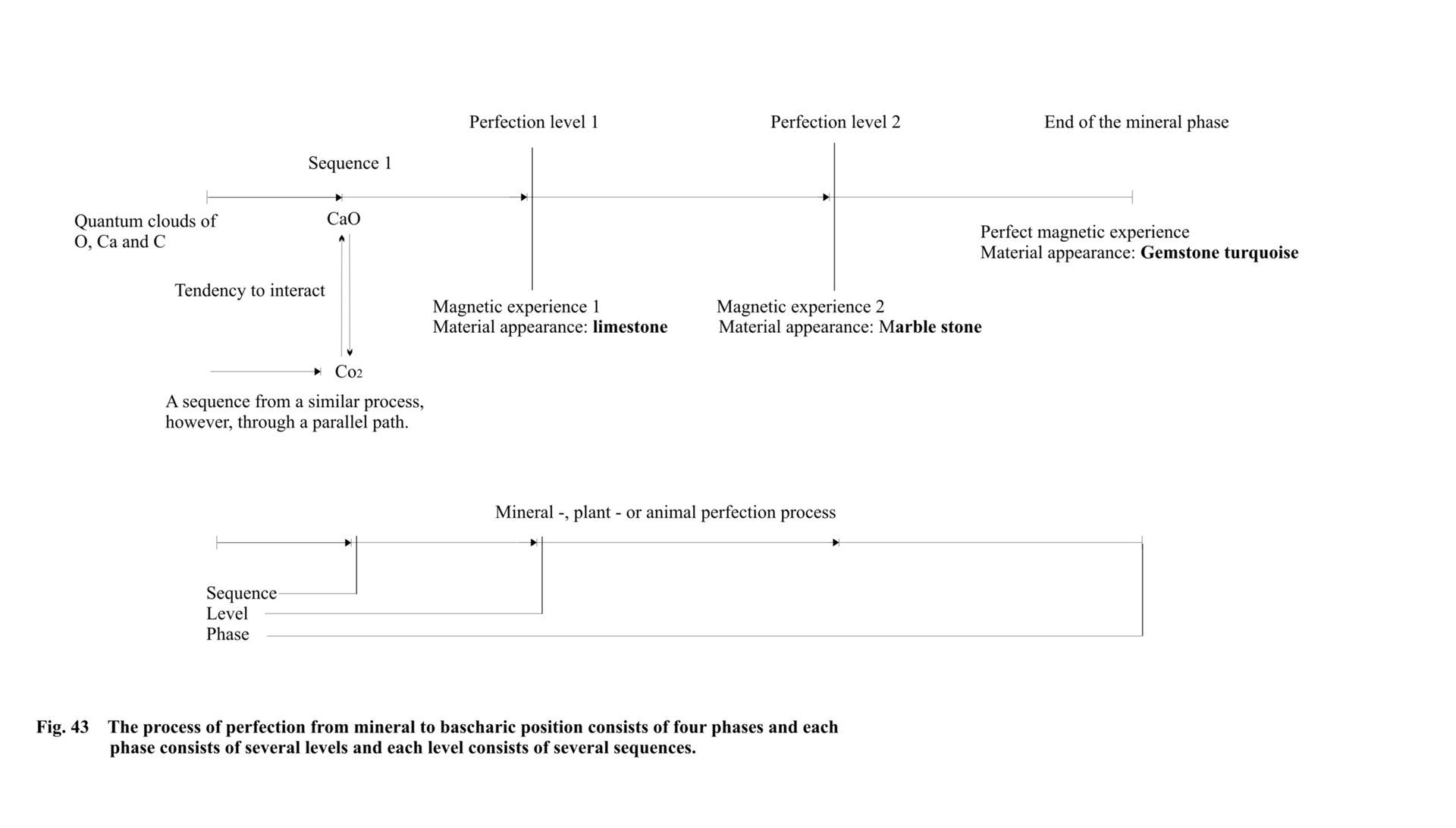
To fully grasp this inequality, it is essential to understand that the energy of the soul—or the governing quantum cloud—gradually increases over time and is not constant.
At this juncture, it is critical to note that we have not yet elucidated the mechanism of absorption
(or replication) of these magnetic fields, also referred to as
“souls,”
from their storage location within three quantum dimensions in a specific spatial region, nor their connection to their respective material dimension upon their initial material manifestation on planetary bodies.
We have refrained from doing so because presenting these topics simultaneously would render the discourse so complex that it might only be accessible to those who have a comprehensive understanding of the ontology of Master Elahi—a very limited number of individuals.
Therefore, for now, we will focus solely on the emergence of these specific magnetic fields, or “souls,” in relation to the combinatory behavior of subatomic particles, atoms, molecules, and biological organs. In future papers, however, once the quantum dimension of physical bodies has been sufficiently and rigorously explored from a scientific standpoint, we will return to this subject in depth.
In commemoration of the 129th anniversary of Master Elahi's birth
The extension of relativity's theory
Philosophy
Superstition- Episode 1
Philosophy
Superstition- Episode 2
Philosophy:
Who is Elite?
Persia-Iran: Art & Culture
Episode 1
A short story:
Crossing the River
A short story:
A butterfly´s dream
A short story:
A falling Leaf
Quantum dimension of matter
Tokyo experiment
Ostad Elahi's Tanbourplaying
Unification of the sciences of both dimensions
Life in space
The question is:
Reincarnation or ascending method?
A short story:
The Matador
The seven factors of creation
Intelligence network
Master Elahi's Prophecies
Laws of creation
Laws of creation

This research was conducted by Faramarz Tabesh
The article code is available in the archive of the Research Institute Andishe Online Germany (AOG):
Hwg unl jsh,d hkvCdög fhlül,uhkvCd hüchM
References
All explanatory notes are provided by Faramarz Tabesh.
[1] Quantum mechanics is a fundamental branch of theoretical physics that deals with physical phenomena at microscopic scales. At this scale, physical actions are on the order of Planck’s constant.
The Feynman Lectures on Physics, Volume III: Quantum Mechanics
Author: Richard P. Feynman
Coauthors: Robert B. Leighton, Matthew Sands
Publisher: Addison-Wesley, 1965
ISBN: 978-0465025015
[2] Max Planck: Born April 23, 1858 – Died October 4, 1947. One of the most important German physicists of the 19th and early 20th centuries. He is considered by some as the father of quantum theory.
"Quantum: Einstein, Bohr, and the Great Debate about the Nature of Reality"
Author: Manjit Kumar
ISBN: 978-0393339888
[3] Werner Heisenberg: Born December 5, 1901 – Died February 1, 1976. German physicist and Nobel laureate, one of the founders of quantum mechanics. He is known as the father of quantum mechanics.
"Uncertainty: The Life and Science of Werner Heisenberg"
Author: David C. Cassidy
Publisher: W. H. Freeman
ISBN: 978-0716725035
[4] Heisenberg’s Uncertainty Principle: One of the foundational concepts in quantum mechanics, stating that it is impossible to simultaneously measure the position and momentum of a particle with arbitrary precision. (Persian)
https://www.andishe.online/newpage76048046
Richard Feynman, The Feynman Lectures on Physics, Vol. III
Chapter 1: Quantum Behavior
https://www.feynmanlectures.caltech.edu/III_01.html
[5] Cartesian–Newtonian Worldview: Refers to a scientific, philosophical, and mechanical view of the world formed in the 17th and 18th centuries. This worldview formed the basis of many classical sciences (before quantum mechanics and relativity) and deeply influenced philosophy, physics, biology, psychology, and even theology.
Capra, Fritjof. The Turning Point: Science, Society, and the Rising Culture.
• Publisher: Bantam Books
• Year: 1982
• ISBN: 978-0553345728
[6] Albert Einstein:
Brian Greene. The Elegant Universe
Publisher: W. W. Norton & Company
Year: 1999
ISBN: 978-0393338102
In this book, American physicist Brian Greene clearly explains how Einstein’s theories fundamentally replaced Newtonian physics.
[7] Albert Einstein’s Theory on Newtonian Physics: There is a credible and global scientific source. This is part of the foundation of Einstein’s general relativity theory, where he shows that Newton’s laws (classical mechanics) are valid at low speeds and weak gravitational fields, but must be replaced in extreme conditions (such as speeds close to light or strong gravitational fields).
Article Title:
"Die Grundlage der allgemeinen Relativitätstheorie"
(Translation: The Foundation of the General Theory of Relativity)
Author: Albert Einstein
Year: 1916
Published in: Annalen der Physik
DOI: 10.1002/andp.19163540702
[8] Max Born – Biography – Nobel Prize Official Website
Link:
https://www.nobelprize.org/prizes/physics/1954/born/biographical/
Description:
This official Nobel Prize page includes a short biography, scientific achievements, and information about Max Born’s life and work.
[9] Pascal Jordan – Biography – MacTutor History of Mathematics Archive
Link:
https://mathshistory.st-andrews.ac.uk/Biographies/Jordan/
Description:
This page from the University of St Andrews mathematics history archive offers a full and reliable biography of Pascal Jordan, along with his scientific achievements and role in the development of quantum mechanics.
[10] Matrix Mechanics – Encyclopaedia Britannica
Link:
https://www.britannica.com/science/matrix-mechanics
Description:
This Britannica article introduces matrix mechanics as the first complete form of quantum mechanics, developed by Werner Heisenberg, Max Born, and Pascal Jordan in the 1920s.
[11] Erwin Schrödinger – Biography – Nobel Prize Official Website
Link:
https://www.nobelprize.org/prizes/physics/1933/schrodinger/biographical/
Description:
This official Nobel Prize page includes biography, scientific achievements, and comprehensive information about Erwin Schrödinger, one of the founders of quantum mechanics.
[12] John Hasbrouck Van Vleck:
An American physicist and mathematician awarded the 1977 Nobel Prize in Physics for his work on magnetic systems and disordered systems.
John Hasbrouck Van Vleck – Biography – Nobel Prize Official Website
Link:
https://www.nobelprize.org/prizes/physics/1977/van-vleck/biographical/
Description:
This official Nobel Prize page includes biography, scientific achievements, and Van Vleck’s important role in developing theoretical physics, especially quantum magnetism.
[13] Quantum Principles and Line Spectra: Van Vleck, J. H. (1932). Quantum Principles and Line Spectra. New York: Van Nostrand Reinhold Company.
[14] According to us at the Research Institute Andisheh Online Germany(AOG) and based on Ostad Elahi’s ontology, any equation that results in infinity is fundamentally incorrect.
[15] Schrödinger’s cat: Baggott, J. (2011). The Quantum Story: A History in 40 Moments. Oxford University Press. Or refer to the article 'Superstition, an inexplicable concept' at this link: https://www.andishe2.online/en-philosophy--superstition--an-inexplicable-concept
[16] The idealism of physicists: Albert Einstein’s letters to Max Born about quantum mechanics were exchanged over a long period and in several instances. However, one of the most famous letters, in which Einstein wrote the well-known phrase:
"I, at any rate, am convinced that He does not play dice."
dates back to 1926.
Historical context:
• At that time, quantum mechanics had just been developed by scientists such as Heisenberg, Born, and Schrödinger.
• Although Einstein contributed to the founding of quantum mechanics, he opposed the Copenhagen interpretation, which emphasized randomness and uncertainty.
• In his letters to Max Born, he repeatedly expressed serious criticisms about the philosophical and probabilistic aspects of quantum theory.
[17] In our research at the Research Institute Andisheh Online Germany (AOG), the universe in both its material and quantum dimensions is referred to as a causally influenced universe, which includes all multiverses.
[18] Integrated Sciences: By establishing a scientific framework based on Ostad Elahi’s ontology, which we named Integrated Sciences, the prospect of unifying some academic sciences such as quantum mechanics and particle physics with our intended metaphysics became possible.
[19] For more information about Ostad Elahi’s biography, please refer to:
https://www.andishe.online/newpage36172130
[20] Chapter Two: Study of the Jamadi Stage:
https://www.andishe.online/article-no-17--33
[21] Quantum Dimension: Refers to the spirit or a special magnetic field. For more information, please visit:
https://www.andishe.online/kopie-article-no-6--33
[22] Magnetic Field: From studying Ostad Elahi’s ontology, it appears that academic sciences are still in their early steps regarding understanding magnetic fields. In short: a magnetic field is much more complex than what scientists have discovered so far.
[23] Subatomic Particles: In Ostad Elahi’s explanation of creation, it seems that eleven forces or phenomena are considered by the original and eternal source of creation for the formation and expansion of multiverses. These phenomena are arranged sequentially, and although all have energy and the initial blueprint of creation, because each phenomenon arises from its predecessor, their information and energy levels cannot be the same. Therefore, in our research institute, the eleven fermions of the Standard Model are considered reflections of these eleven primary phenomena of creation, and the creation of the universe is explained based on this.
[24] Two Main Sources of Energy: From our perspective, there are two energy sources—dark energy (positronic) and light (electronic)—which influence all multiverses.
[25] Multiverse(s): The existence of multiverses has not been officially confirmed in academic communities, and hypotheses often mention infinite numbers of these worlds. Scientists await experimental evidence, but confirmation or rejection of these models is currently beyond the reach of human technology. Meanwhile, in Ostad Elahi’s ontology, this subject is explained structurally and purposefully. In these teachings, Ostad Elahi refers to eleven multiverses and considers Earth and several other planets located at the lowest position of the lowest multiverse.
[26] Intelligence networks: One of the important topics at the Research Institute Andisheh Online Germany (AOG). This subject discusses the connectivity and interaction of different operations with each other to achieve a more stable state in the universe.
[27] Quantomagnetics Theory: Published in six languages on the institute’s platform and global platforms. For more information, see:
https://www.andishe2.online/en--appearance-of-instinctive-characteristics--78
[28] Time as the Fourth Dimension: Since the energy of every existing unit is constantly increasing, time is recognized as a fundamental factor.
Video clip
Audio format for the visually impaired
SOON

